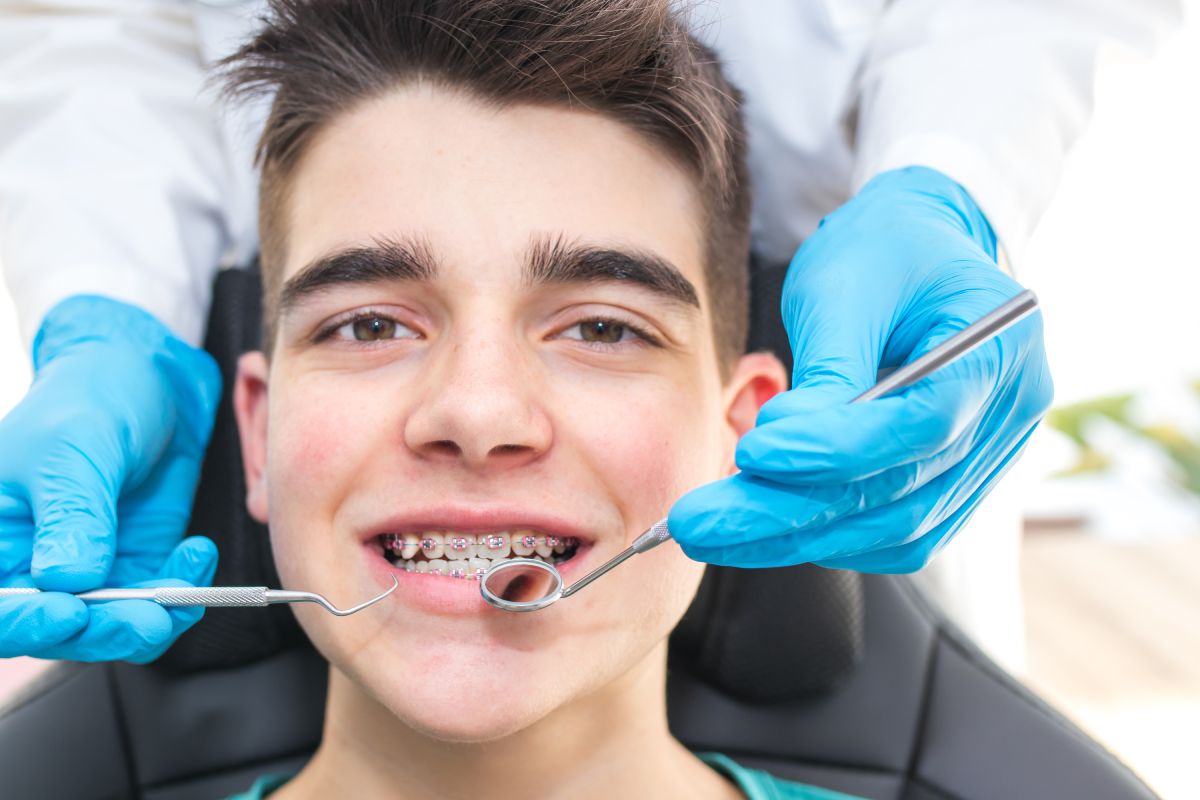Causey Orthodontics Things To Know Before You Buy
Wiki Article
Some Ideas on Causey Orthodontics You Should Know
Table of ContentsCausey Orthodontics for BeginnersThe 20-Second Trick For Causey OrthodonticsNot known Facts About Causey OrthodonticsThe Ultimate Guide To Causey OrthodonticsThe 15-Second Trick For Causey Orthodontics
Disregarding occlusal relationships, it was typical to get rid of teeth for a selection of dental issues, such as malalignment or congestion. The principle of an undamaged teeth was not commonly appreciated in those days, making bite relationships seem pointless. In the late 1800s, the concept of occlusion was essential for developing trustworthy prosthetic replacement teeth.As these principles of prosthetic occlusion advanced, it became an indispensable tool for dental care. It remained in 1890 that the work and impact of Dr. Edwards H. Angle started to be felt, with his payment to contemporary orthodontics particularly significant. Concentrated on prosthodontics, he taught in Pennsylvania and Minnesota before guiding his attention in the direction of dental occlusion and the treatments required to keep it as a typical condition, therefore becoming recognized as the "father of modern-day orthodontics".

The idea of perfect occlusion, as proposed by Angle and included into a category system, made it possible for a change towards treating malocclusion, which is any discrepancy from normal occlusion. Having a complete collection of teeth on both arches was very demanded in orthodontic treatment due to the need for specific relationships in between them.
All about Causey Orthodontics
As occlusion ended up being the crucial concern, facial percentages and appearances were ignored - Causey Orthodontics. To attain suitable occlusals without using outside pressures, Angle postulated that having excellent occlusion was the very best way to obtain maximum facial aesthetics. With the passing away of time, it ended up being fairly evident that even a phenomenal occlusion was not appropriate when taken into consideration from an aesthetic viewpointIt came to be noticeable that orthodontic treatment can readjust mandibular advancement, causing the development of useful jaw orthopedics in Europe and extraoral pressure procedures in the US. These days, both functional appliances and extraoral devices are applied around the world with the goal of modifying development patterns and kinds. Consequently, going after real, or at the very least enhanced, jaw partnerships had ended up being the major objective of treatment by the mid-20th century.
Fascination About Causey Orthodontics
 The American Journal of Orthodontics was produced for this purpose in 1915; prior to it, there were no clinical goals to adhere to, nor any kind of accurate category system and brackets that did not have features. Up until the mid-1970s, dental braces were made by wrapping steel around each tooth. With innovations in adhesives, it ended up being feasible to instead bond metal braces to the teeth.
The American Journal of Orthodontics was produced for this purpose in 1915; prior to it, there were no clinical goals to adhere to, nor any kind of accurate category system and brackets that did not have features. Up until the mid-1970s, dental braces were made by wrapping steel around each tooth. With innovations in adhesives, it ended up being feasible to instead bond metal braces to the teeth.This has had meaningful impacts on orthodontic treatments that are provided consistently, and these are: 1. Appropriate interarchal relationships 2. Appropriate crown angulation (tip) 3.
The benefit of the design lies in its brace and archwire combination, which requires just marginal cord flexing from the orthodontist or medical professional (family orthodontics). It's appropriately named after this feature: the angle of the port and density of the bracket base ultimately determine where each tooth is located with little demand for added control
See This Report on Causey Orthodontics
Both of these systems employed similar braces for each tooth and demanded the bending of an archwire in 3 planes for situating teeth in their wanted positions, with these bends dictating best positionings. When it comes to orthodontic home appliances, they are split right into 2 types: removable and taken care of. Detachable devices can be taken on and off by the person as needed.
Thus, almost all contemporary fixed appliances can be taken into consideration variants on this edgewise device system. Early 20th-century orthodontist Edward Angle made a significant contribution to the globe of dentistry. He created 4 unique appliance systems that have actually been utilized as the basis for many orthodontic therapies today, disallowing a few exemptions.
Causey Orthodontics Fundamentals Explained

The cord finished in a thread, and to move it onward, an adjustable nut was utilized, which enabled an increase in area. By ligation, each individual tooth was affixed to this expansive archwire (best orthodontist near me). As a result of its limited variety of movement, Angle was incapable to accomplish specific tooth placing with an E-arch
These tubes held a soldered pin, which might be repositioned at each visit in order to relocate them in position. Referred to as the "bone-growing device", this contraption was thought to encourage much healthier bone growth as a result of its potential for moving force directly to the origins. Implementing it confirmed bothersome in reality.
Report this wiki page